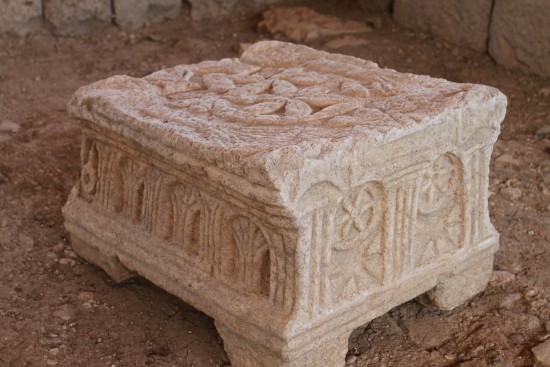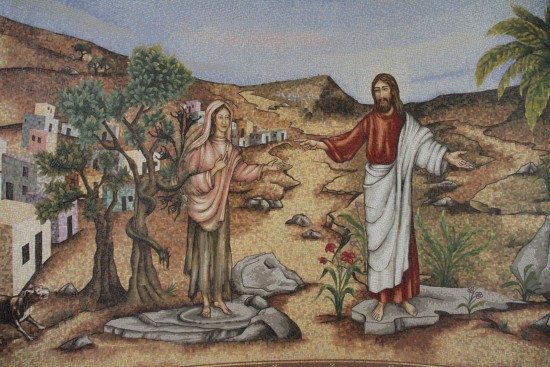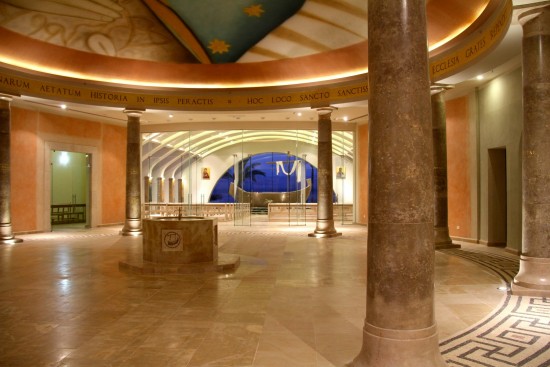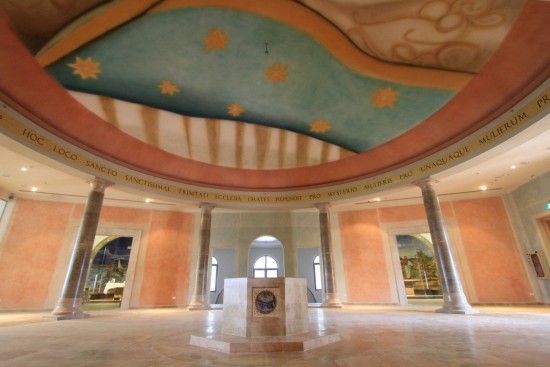At Easter Mass, we will listen again to the beautiful story of Mary Magdalene, a saint that a great many women admire. Yet, we know very little about her - so little, in fact, that a multitude of widely disparate theories have emerged over the past 2000 years as to who she really was. Her character, on the other hand, is something the gospels are very clear about: Mary Magdalene was fearless, persistent and tenacious.
She stood at the foot of the cross throughout the horrors of the crucifixion. She watched Jesus’ burial, taking “note of where he was laid.” Having observed the Sabbath, she was up before dawn on Sunday, making her way to the tomb. Some accounts have her in the company of other women, one has her heading out alone. Either way, she was determined to get there before anyone else. In John’s gospel, after alerting the disciples to the empty tomb, Mary then stays behind after they’ve returned home. It is then that she encounters Jesus and becomes the first witness to the resurrection.
We may never know many more details about her beyond these. However, an exciting excavation now underway in Israel is literally digging into the world of Mary Magdalene. It’s already shed new light on the place where most believe she lived - and probably met Jesus.
Magdala is situated on the Sea of Galilee, only about six miles from Capernaum, where Jesus had his headquarters. In 2009, a routine archeological salvage dig conducted prior to a building project unearthed a first century synagogue at Magdala – the first ever found in the Galilee region dating from this period. Jesus undoubtedly taught in this synagogue – and Mary Magdalene may well have heard him preach there.
 Magdala Stone. Used with the kind permission of the Israeli Antiquities Authority. All rights reserved.
Magdala Stone. Used with the kind permission of the Israeli Antiquities Authority. All rights reserved.
The synagogue is small in size, measuring just 11 x 11 meters – and luxurious in its decoration. Beautiful mosaic tiles that covered the floors have been found intact along with fragments of a brightly painted fresco. Even the ritual baths - or miqva’ot - found in the Magdala synagogue have a sophisticated water system not seen again until the Middle Ages. Perhaps, the most intriguing find of all is a carved stone object about the size of a toy chest. Currently being studied by experts at the Israel Antiquities Authority, the Magdala Stone appears to depict the interior of the temple in Jerusalem. Magdala is the crossroads of Jewish and Christian history.
Excavations have also confirmed that Magdala was an affluent town with a vibrant economy focused on food processing – specifically, preserving fish from the Sea of Galilee for export. Salting pools have been discovered along with a unique complex for fish farming. This has served to validate the writings of the first century historian Flavius Josephus who stated that fish processed in Magdala was sold in the markets of Rome. These discoveries may also shed some light on the passage from Luke regarding Mary Magdalene and her contemporaries who “provided for (Jesus and the disciples) out of their own resources.” Magdala was clearly a prosperous economic hub with many wealthy residents.
The archeological park at Magdala opened in 2014. Visitors are welcome to the site and can even participate in the archeological dig. Plans are also in the works for accommodations and a spirituality center - enabling visitors from around the world to visit Magdala and partake in religious services and retreats. Some of these facilities have already opened; others are anticipated by 2018. For more information, see: www.magdala.org and www.facebook.com/experiencemagdala/.
Beyond its historical and religious significance, Magdala intends to honor women. The Women’s Atrium, constructed last year at Magdala, bears this inscription: “In this holy place, the church gives thanks for the feminine genius of women, for their eternal dignity and for the great works God has done through them throughout history for humanity.” The Magdalena Institute, also in the works, will become an international hub to discuss women’s issues and build on the work undertaken in the religious arena to help billions of women worldwide.
Indeed, what better place to honor women than the former home of Mary Magdalene?
Copyright 2016 Beverly Behan for the Magdala Project.
 About the author: Beverly Behan is the author of four books and a former columnist for BusinessWeek.com. She serves as an ambassador for the Magdala project in the United States – something she invites other women to consider becoming! Beverly would happy to answer any questions or provide more information on Magdala to CatholicMom.com readers and can be reached at Beverly.behan@boardadvisor.net.
About the author: Beverly Behan is the author of four books and a former columnist for BusinessWeek.com. She serves as an ambassador for the Magdala project in the United States – something she invites other women to consider becoming! Beverly would happy to answer any questions or provide more information on Magdala to CatholicMom.com readers and can be reached at Beverly.behan@boardadvisor.net.
About the Author

Guest
We welcome guest contributors who graciously volunteer their writing for our readers. Please support our guest writers by visiting their sites, purchasing their work, and leaving comments to thank them for sharing their gifts here on CatholicMom.com. To inquire about serving as a guest contributor, contact editor@CatholicMom.com.





.png?width=1806&height=731&name=CatholicMom_hcfm_logo1_pos_871c_2728c%20(002).png)
Comments